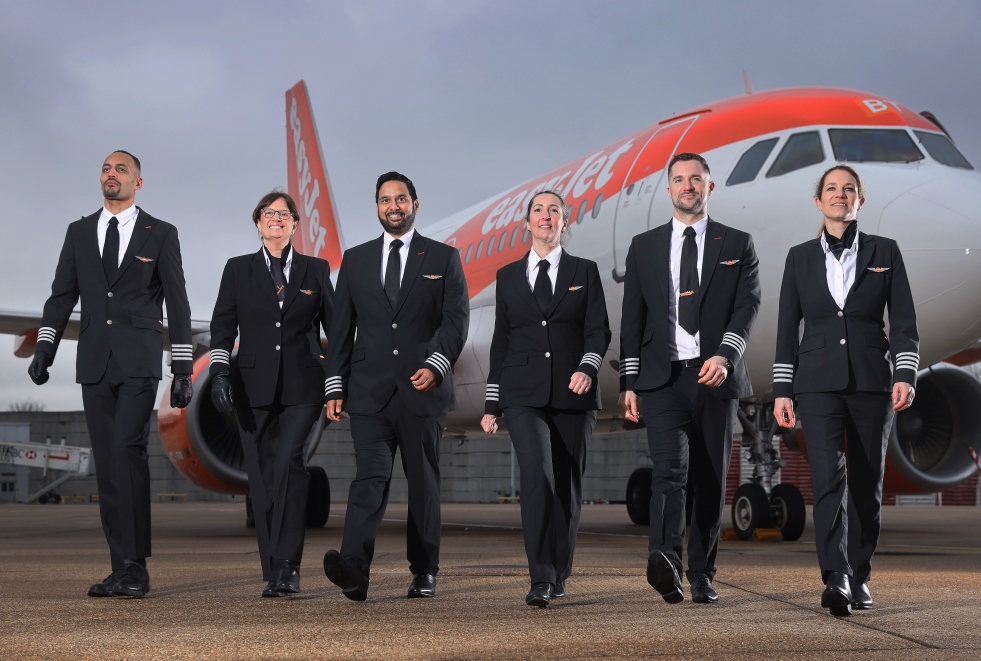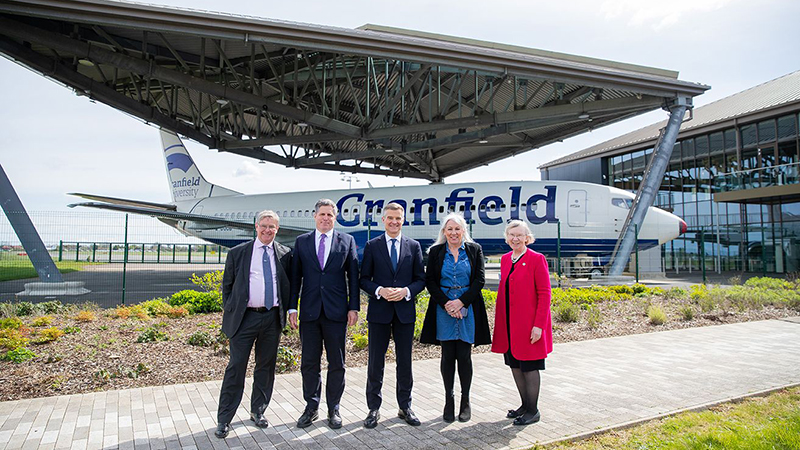IATA reports strong passenger and freight demand for July

Total revenue passenger kilometres (RPKs) rose 6.8%, compared to the same month last year, down from 7.7% year-over-year growth recorded in June.
All regions reported solid or better growth in passenger volumes over the past year. Capacity (available seat kilometers or ASKs) increased by 6.1%, and load factor rose 0.6 percentage points to a July record of 84.7%.
Alexandre de Juniac, IATA’s Director General and CEO said: “As is evidenced by the record high load factor in July, the appetite for air travel remains very strong. However, the stimulus effect of lower fares is softening in the face of rising cost inputs. This suggests a moderating in the supportive demand backdrop.”

- European carriers posted a 7.5% rise in traffic for July compared to a year ago, down from 8.8% annual growth in June. Capacity rose 5.9%, and load factor climbed 1.3 percentage points to 88.7%, highest among the regions. The economic backdrop in Europe has strengthened; however, on a seasonally-adjusted basis, the upward growth in travel demand has moderated sharply since February.
- Asia-Pacific airlines’ July traffic rose 5.9% over the year-ago period, a deceleration compared to June growth of 8.8%. As with Europe, carriers in the Asia-Pacific region are seeing a slowing of demand growth. Capacity increased 6.7% and load factor slipped 0.6 percentage points to 81.0%.
- Middle East carriers had a 4.5% increase in demand for July. This was an acceleration from the 3.6% annual growth seen in June, but was still well off the 5-year average pace of 11.2%. The Middle East to North America market has been affected by a combination of factors in 2017, including the recently-lifted cabin ban on large portable electronic devices, as well as a wider impact from the proposed travel bans to the US. Traffic growth on the Middle East-US route was already slowing in early 2017, in line with a moderation in the pace of expansion of nonstop services flown by the largest Middle Eastern airlines. July capacity climbed 3.6% compared to a year ago and load factor rose 0.7 percentage points to 81.5%.
- North American airlines’ traffic climbed 3.5% compared to July a year ago. This was down from 4.4% growth in June, but still ahead of the 5-year average pace (2.9%). Outbound travel is being supported by the relatively solid economic backdrop in North America; however, anecdotal evidence suggests that inbound demand is being negatively influenced by the additional security measures in place for travel to the US. July capacity rose 3.8% with the result that load factor slipped 0.3 percentage points to 85.9%.
- Latin American airlines recorded the strongest growth among regions, posting a 10.5% demand rise compared to July 2016. Capacity increased almost as fast, up 10%, and load factor climbed 0.4 percentage points to 84.9%. International volumes between North and Central America continue to strongly trend upward while traffic on the North-South America market segment has also started to trend upwards, in part helped by the healthier, albeit still fragile, economic backdrop in Brazil.
- African airlines experienced a 6.5% increase in traffic compared to a year ago, down from 9.8% demand growth in June. Capacity rose 1.7%, and load factor jumped 3.4 percentage points to 74.1%. Conditions in the region’s two largest economies continue to diverge, with South Africa in recession while business confidence levels are at a two-year peak in Nigeria.
Domestic Passenger Markets
Domestic travel demand grew by 7.9% year-on-year in July, in line with 8.0% growth recorded in June. With the exception of Australia, all markets recorded annual increases. China led all markets (+15.0%). Domestic capacity climbed 7.1%, and load factor rose 0.6 percentage points to 85.0%

“As the first full month in the summer peak travel season, July is a bellwether month, and demand continues to be very strong. People want to travel and aviation connectivity is vital to the smooth functioning of the global economy. But the economic and social benefits that aviation brings need to be supported by adequate, affordable airport and air traffic management infrastructure. To do this effectively, governments must include aviation’s requirements as part of their national economic strategy,” said de Juniac.
Freight Markets
 Data for global air freight markets showed that demand, measured in freight tonne kilometres (FTKs), increased by 11.4% in July 2017 compared to the same period a year ago. This was the fourth time in five months that double-digit annual growth was recorded. July's year-on-year increase in demand is nearly four times higher than the 10 year average growth rate of 3.1%.
Data for global air freight markets showed that demand, measured in freight tonne kilometres (FTKs), increased by 11.4% in July 2017 compared to the same period a year ago. This was the fourth time in five months that double-digit annual growth was recorded. July's year-on-year increase in demand is nearly four times higher than the 10 year average growth rate of 3.1%.
Freight capacity, measured in available freight tonne kilometers (AFTKs), grew by 3.7% year-on-year in July 2017. Demand growth continues to significantly outstrip capacity growth, which is positive for airline yields and the industry's financial performance.
The robust growth in air cargo demand is consistent with an uptick in global trade, rising export orders and upbeat business confidence indicators. There are, however, signs that demand growth for air freight may be nearing a peak. Seasonally-adjusted air freight volumes were flat in June and fell in July; and the global inventory-to-sales ratio has stabilised. Air cargo often sees a boost in demand at the beginning of an economic upturn as companies look to restock inventories quickly. This tapers as inventories are adjusted to new demand levels.
"July was a strong month for air cargo with double-digit growth. And for the third consecutive month demand for air freight grew at a faster pace than demand for air travel. While the outlook for the rest of the year remains positive, there are signs that the cyclical growth period may be nearing a peak," said Alexandre de Juniac, IATA's Director General and CEO.

Regional Performance
All regions posted robust freight growth in July 2017.
- Asia-Pacific airlines' freight volumes grew 11% in July 2017 compared to the same period a year earlier and capacity increased by 6.3%. Demand growth was robust on all the major routes to, from and within the region. Seasonally-adjusted international freight volumes fell slightly in July but remain more than 3% above the volumes reached following the 2010 post-global financial crisis bounce-back.
- North American carriers posted an increase in freight volumes of 11.9% in July 2017, and a capacity increase of 1.1%. Seasonally-adjusted international freight volumes continued their strong upwards trend. The strength of the US dollar has boosted the inbound freight market over the past few years. Data from the US Census Bureau showed a 12.5% increase in air imports to the US in the first half of 2017. However, the decline in the US dollar since the start of the year is likely to help rebalance trade flows.
- European airlines posted a 12.1% increase in freight demand in July 2017 and a capacity increase of 5.5%. Double-digit growth in international demand has now been recorded in nine out of the past eleven months bolstered by strong demand on the Europe-Asia market. While export orders remain strong the recent strengthening of the Euro may begin to weigh upon the region's exporters.
- Middle Eastern carriers' year-on-year freight volumes increased 9.3% in July 2017 and capacity decreased 0.4%. Seasonally-adjusted international freight volumes have maintained their solid upward trend. However, amid strong competition from other region's carriers particularly on the Asia-Europe route, the Middle East carriers are not seeing as strong a pickup in the seasonally adjusted traffic trend as other region's carriers.
- Latin American airlines experienced a growth in demand of 5.8% in July 2017 compared to the same period in 2016. Capacity increased by 4.7% over the same period. Seasonally-adjusted international freight volumes grew strongly in July 2017 however they remained 9% lower than at the peak in 2014. The region continues to be impacted by challenging economic and political conditions, particularly in the largest economy, Brazil.
- African carriers posted the largest year-on-year increase in demand of all regions in July 2017 with freight volumes growing 33.7% - the second fastest monthly rise in seven years. Capacity increased by 4.5% over the same time period. Demand has been boosted by very strong growth on the trade lanes to and from Asia which increased 80% year-on-year in June (latest available data) and by 65% in the first half of the year.













